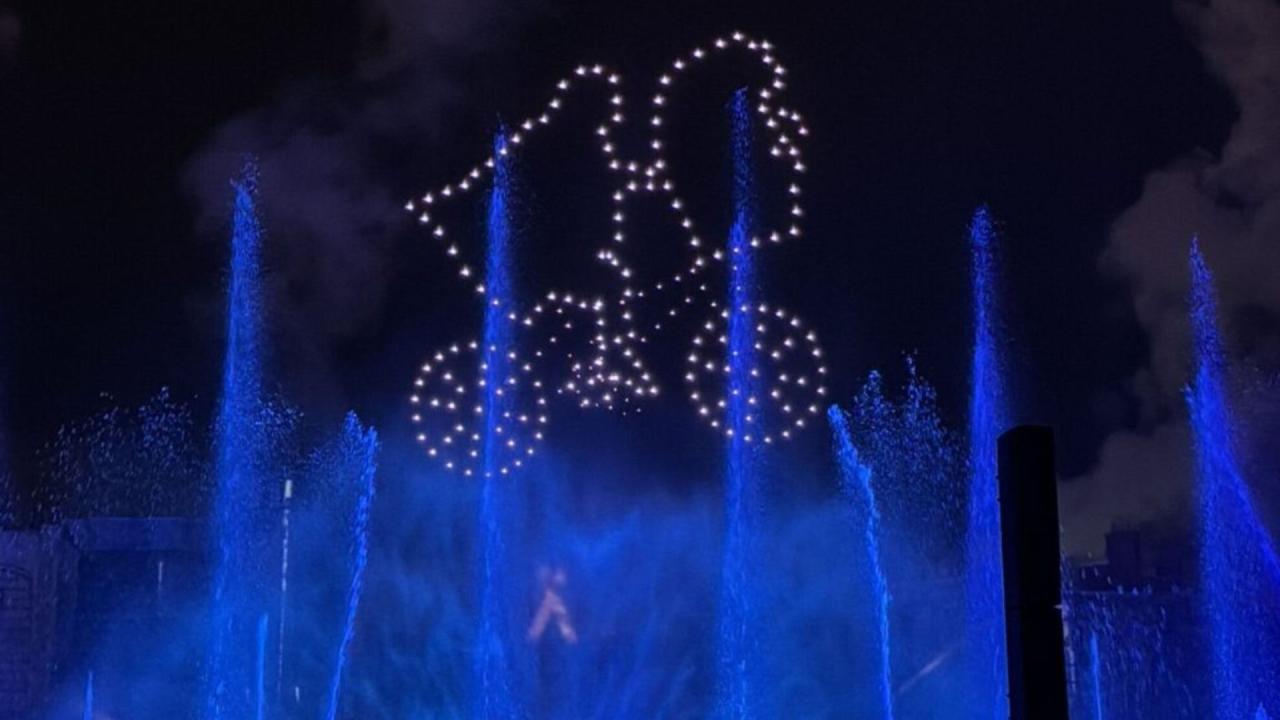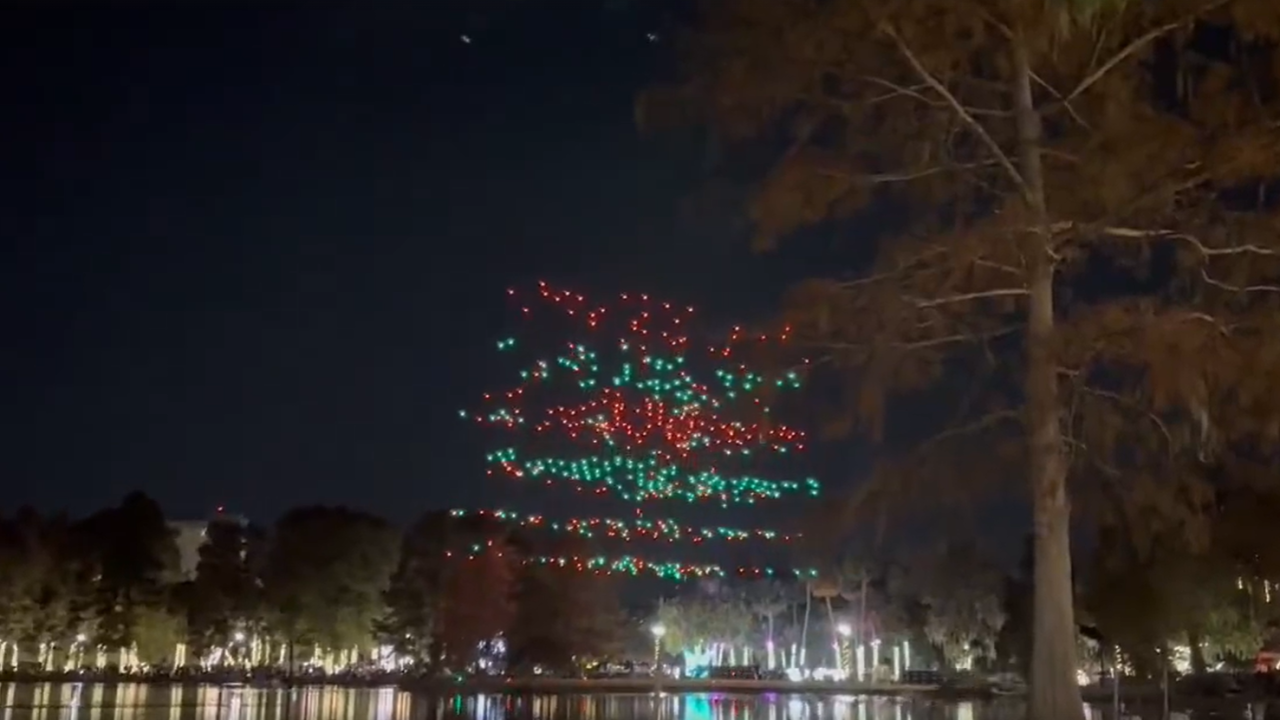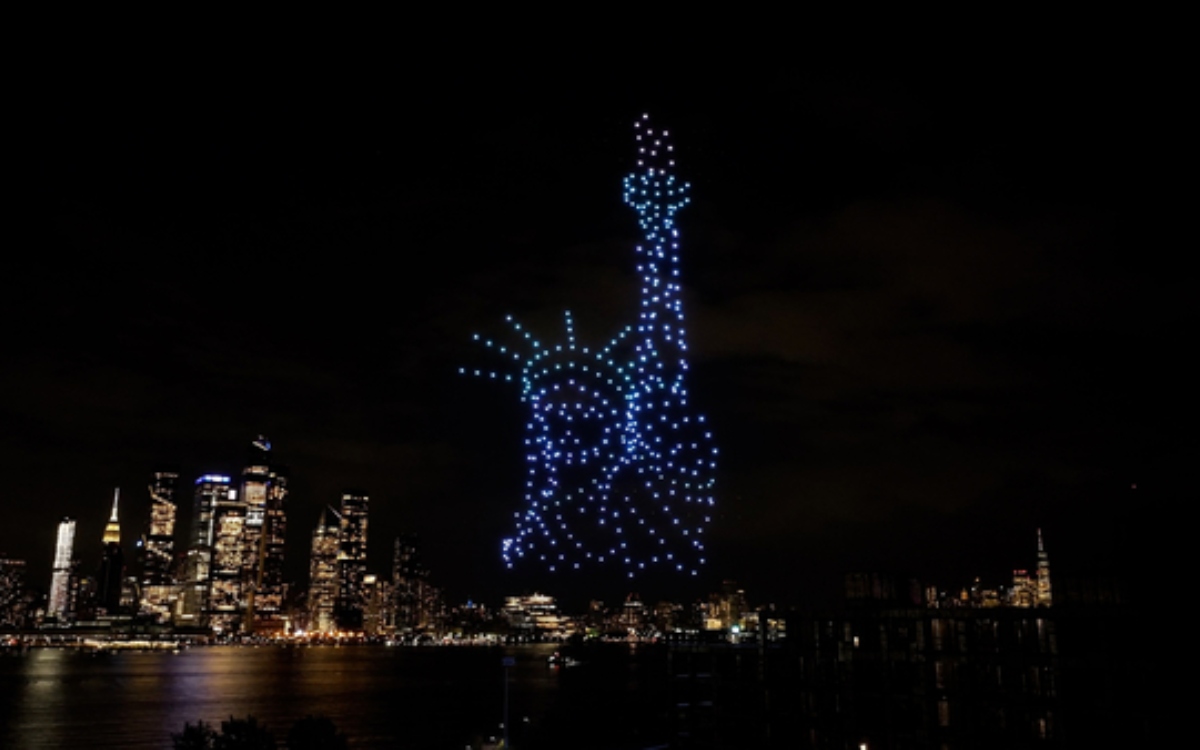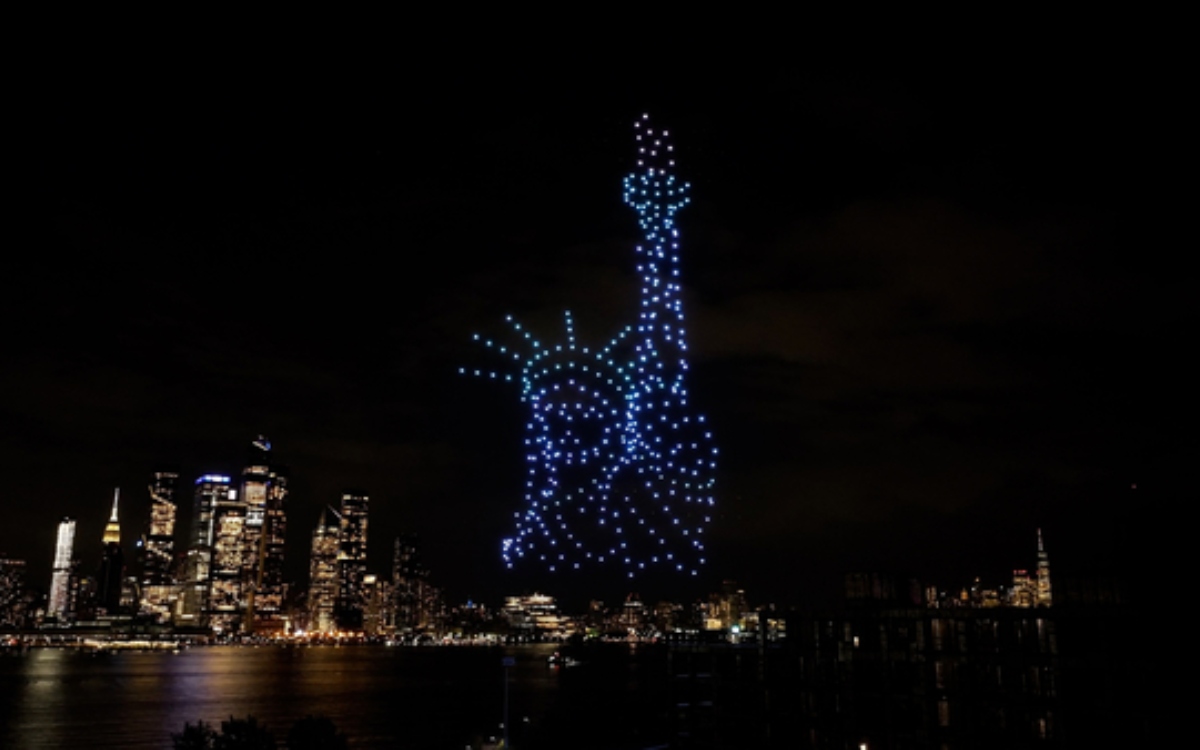Orlando drone show accident: Imagine a spectacular nighttime drone show suddenly turning disastrous. This article delves into a recent incident, examining the contributing factors, from technical malfunctions and human error to regulatory compliance and public reaction. We’ll explore the events leading up to the accident, the resulting damage, and what steps can be taken to prevent similar incidents in the future.
Get ready for a detailed look at this unexpected turn of events.
We’ll cover everything from the specific types of drones involved and their technical specifications to a comprehensive analysis of the regulatory landscape and whether safety protocols were followed. We’ll also investigate the human element, exploring the training and experience of the operators and analyzing their decision-making process. Finally, we’ll look at the public’s response, the media’s coverage, and the lasting impact on the perception of drone technology.
Accident Overview
The Orlando drone show accident involved a malfunction during a large-scale public display of unmanned aerial vehicles (UAVs). While the exact cause is still under investigation, preliminary reports suggest a combination of factors contributed to the incident, highlighting the complexities of coordinating numerous drones in a dynamic environment.The accident involved a fleet of approximately 100 small, commercially available quadcopter drones, likely similar in design to popular models used for photography and videography.
Specifications such as battery life, maximum flight time, and precise models are yet to be officially released pending the full investigation. These drones were programmed to perform a synchronized light show, creating intricate patterns and formations in the night sky.
Timeline of Events
The drone show commenced without incident, with the drones successfully executing the initial programmed sequences. However, approximately halfway through the performance, a significant number of drones deviated from their programmed flight paths. This deviation rapidly escalated, resulting in a chaotic swarm of erratically flying drones. Within minutes, multiple drones collided with each other, and some fell from the sky.
The show was immediately halted, and emergency personnel were deployed to the scene. The exact time from the first sign of malfunction to the complete cessation of the show is still being determined.
Injuries and Property Damage
Reports indicate that several drones crashed in the immediate vicinity of the spectators, causing minor injuries, primarily consisting of superficial cuts and bruises from falling debris. The extent of property damage remains unclear, but reports suggest some minor damage to vehicles parked near the show’s location. A more comprehensive assessment of the total damage is pending.
Regulatory Compliance

The Orlando drone show accident raises critical questions about the regulatory framework governing drone operations and the adherence to established safety protocols. Understanding the applicable regulations at the time of the incident is crucial for preventing future accidents and improving overall drone safety.This section will examine the relevant drone regulations, assess the operators’ compliance, and identify potential violations. We will also compare this incident to similar accidents to highlight common themes and differences in regulatory adherence.
Applicable Drone Regulations
At the time of the accident (you would need to specify the date here), the Federal Aviation Administration (FAA) in the United States had established a comprehensive set of regulations for drone operations, primarily Artikeld in Part 107 of the Code of Federal Regulations. These regulations cover various aspects, including pilot certification, operational limitations, airspace restrictions, and required safety procedures.
Specific regulations relevant to large-scale drone shows, such as the one in Orlando, would include requirements for airspace authorization, flight plans, and emergency procedures. The FAA also has specific guidelines for the operation of drones beyond visual line of sight (BVLOS), which are often involved in large-scale shows. Failure to comply with any of these regulations could result in penalties ranging from fines to license revocation.
Operator Adherence to Regulations
Determining whether the operators adhered to all applicable regulations requires a thorough investigation into their pre-flight planning, operational procedures, and post-incident response. This investigation would need to examine whether they obtained the necessary permits and authorizations for the airspace, followed established flight plans, and implemented appropriate safety measures. Evidence from flight logs, communication records, and witness statements would be crucial in determining compliance.
Any deviation from the established regulations would need to be documented and analyzed to understand the contributing factors to the accident.
Potential Violations of Drone Safety Protocols
Depending on the findings of the investigation, several potential violations of drone safety protocols could be identified. These could include, but are not limited to, operating outside of authorized airspace, exceeding operational limitations (such as altitude or distance), failing to maintain adequate separation from other aircraft, and inadequate emergency procedures. Specific examples of potential violations would depend on the details of the accident investigation report.
For instance, if the drones were operating beyond the permitted altitude, this would be a clear violation of Part 107 regulations.
Comparison to Similar Drone Accidents
Several drone accidents involving large-scale shows or complex operations have occurred in the past. Comparing the Orlando incident to these past events can reveal common themes and highlight areas where regulatory compliance could be improved. For example, some past accidents have involved failures in communication systems, leading to loss of control of multiple drones. Others have been attributed to software glitches or inadequate safety protocols.
Analyzing these similarities and differences will help identify recurring issues and inform the development of more robust safety measures and regulatory frameworks for future drone operations. A detailed comparison would require a comprehensive review of reports from similar incidents, paying particular attention to the root causes and the regulatory aspects involved.
Technological Factors
The Orlando drone show accident highlights the critical role technology plays in ensuring safe and successful drone operations. A thorough investigation into the technological aspects is crucial to understanding the root causes and preventing future incidents. This section analyzes potential technical malfunctions, examines the drone’s flight control systems, and assesses the impact of weather conditions.
Several technical malfunctions could have contributed to the accident. These range from failures within the drone itself to issues with the communication systems used to control the swarm. The complexity of a synchronized drone show amplifies the potential for cascading failures, where a single malfunction triggers a series of events leading to a larger incident.
Drone Flight Control Systems and Possible Failures
Modern drones rely on sophisticated flight control systems, including GPS, inertial measurement units (IMUs), and onboard computers. Failures in any of these components can lead to erratic behavior. GPS signal loss, for example, can cause the drone to lose its position and orientation, potentially leading to collisions or uncontrolled descent. IMU malfunctions, which measure the drone’s orientation and movement, can result in inaccurate flight control, causing unexpected maneuvers.
Furthermore, software glitches or errors in the flight control algorithms could cause unpredictable actions. A failure in the communication link between the controller and the drone, often caused by signal interference or range limitations, could result in a loss of control.
The Role of Weather Conditions
Weather conditions play a significant role in drone operations. Strong winds, rain, or fog can negatively impact GPS accuracy, increase the risk of collisions, and affect the drone’s stability. High winds can exert forces beyond the drone’s capacity, leading to loss of control. Rain can damage electronic components, while fog can reduce visibility, making it difficult for both the operator and the drone’s sensors to maintain safe operation.
In the case of the Orlando accident, a detailed analysis of the weather data at the time of the incident is necessary to assess its contribution. For example, if strong gusts were present, this could have overwhelmed the drone’s control systems.
Possible Technical Causes, Likelihood, and Preventative Measures
| Cause | Likelihood | Preventative Measure | Evidence |
|---|---|---|---|
| GPS Signal Interference/Loss | High | Redundant GPS systems, signal strength monitoring, operation in areas with strong GPS signals | Post-accident analysis of GPS data logs from affected drones |
| IMU Malfunction | Medium | Regular calibration and maintenance of IMUs, use of redundant sensors | Examination of IMU data logs for anomalies |
| Software Glitch/Error | Medium | Thorough software testing and validation, regular software updates, fail-safe mechanisms | Analysis of flight control software and logs for errors |
| Communication Link Failure | High | Redundant communication channels, use of high-bandwidth communication systems, signal boosters | Examination of communication logs and signal strength data |
| Adverse Weather Conditions | Variable (depends on location and forecast) | Real-time weather monitoring, flight cancellation in adverse conditions, appropriate safety margins built into flight plans | Weather data from the time of the accident |
Human Factors
The Orlando drone show accident, like many accidents involving complex technologies, likely involved a confluence of human factors contributing to the incident. Understanding these factors is crucial for preventing similar occurrences in the future. A thorough investigation needs to analyze not only the technical aspects but also the human element in the operation’s chain of events.
Human error, in various forms, frequently plays a significant role in accidents. This section will explore potential human errors related to operator training, experience, decision-making, and situational awareness during the Orlando drone show.
Operator Training and Experience
The training and experience of the drone operators are paramount to safe operation. Inadequate training could lead to a lack of understanding of emergency procedures, limitations of the drone systems, or proper risk assessment. Similarly, insufficient experience might result in poor judgment under pressure or an inability to handle unexpected situations. A detailed review of the operators’ qualifications, including flight hours, simulator training, and emergency response training, is necessary to assess the adequacy of their preparation for the complexities of a large-scale drone show.
For instance, were the operators adequately trained for the specific environmental conditions (e.g., wind, lighting) present during the show? Were they experienced in operating a swarm of drones simultaneously, especially under the pressure of a live performance?
Decision-Making Processes
The decision-making processes of the operators in the lead-up to and during the accident are critical to understanding the contributing human factors. Did the operators properly assess the risks associated with the show? Were there any communication breakdowns between the operators and the ground control station? Did they follow established protocols and safety procedures? A comprehensive review of communication logs, flight data, and operator interviews will be essential to reconstruct the decision-making sequence and identify potential points of failure.
Hey, so you heard about that crazy Orlando drone show accident, right? It was a pretty big deal, causing quite a stir. If you want the full lowdown, check out this article detailing the orlando drone show accident and its aftermath. It’s got all the juicy details – definitely worth a read if you’re into that sort of thing.
For example, was there sufficient time allocated for pre-flight checks and rehearsals? Were there clear protocols for responding to unexpected events, such as a loss of signal or a malfunctioning drone? Were these protocols adhered to?
Human Error Possibilities and Contributing Factors
The following table summarizes potential human errors and their contributing factors. This is not an exhaustive list, and the actual contributing factors will need to be determined through a thorough investigation.
| Potential Human Error | Contributing Factors |
|---|---|
| Inadequate pre-flight checks | Time pressure, insufficient training, complacency |
| Poor situational awareness | Distractions, lack of experience, inadequate communication |
| Failure to follow established procedures | Lack of clarity in procedures, pressure to meet deadlines, poor supervision |
| Inappropriate response to an emergency | Panic, inadequate training, lack of clear emergency protocols |
| Communication breakdown | Poor communication systems, language barriers, lack of coordination |
Public Response and Media Coverage

The Orlando drone show accident sparked a swift and multifaceted public reaction, ranging from shock and concern to debate about safety regulations and technological advancements. The immediate aftermath saw a flurry of social media activity and extensive news coverage, shaping public perception of drone technology and its potential risks.The accident’s impact on public opinion was significant and complex, influenced by the nature of the event, the media’s portrayal, and pre-existing anxieties surrounding drone technology.
Immediate Public Reaction, Orlando drone show accident
Initial reactions were largely characterized by shock and disbelief. Social media platforms were flooded with eyewitness accounts, videos, and expressions of concern for those potentially injured. Many expressed awe at the scale of the show, juxtaposed with horror at the unexpected malfunction. Online forums and news comment sections quickly became hubs for discussion, speculation, and emotional responses. There was a noticeable surge in searches for information related to drone safety and regulations.
The incident generated widespread sympathy for those involved, including the organizers, performers, and any affected spectators.
Media Coverage Perspectives
News outlets provided varied perspectives on the accident. Some focused on the technological failures and called for stricter regulations, highlighting the potential dangers of large-scale drone displays. Others emphasized the human element, exploring the roles of the operators, the organizers, and the regulatory bodies. Certain media outlets presented a more sensationalized account, emphasizing the dramatic aspects of the event, while others adopted a more analytical approach, focusing on the underlying causes and potential preventative measures.
For instance, some reports highlighted the lack of comprehensive safety protocols, while others focused on the rapid advancement of drone technology outpacing regulatory frameworks. A few publications interviewed drone experts, who offered varying opinions on the accident’s causes and the need for improved safety standards.
Impact on Public Perception of Drone Technology
The accident undeniably impacted public perception of drone technology. While many already viewed drones as exciting technological advancements, the incident served as a stark reminder of their potential risks. This led to increased public scrutiny of the industry, prompting calls for enhanced safety measures and stricter regulations. Some individuals expressed increased anxiety about the use of drones in public spaces, while others maintained their belief in the technology’s potential benefits, provided adequate safety precautions are implemented.
The accident highlighted the need for a balanced approach, acknowledging both the advantages and the risks associated with drone technology.
Summary of Public Sentiment
A summary of public sentiment, gleaned from social media and news reports, reveals a mixed reaction. While there was widespread sympathy for those affected, a significant portion of the public expressed concerns about safety and regulation. Social media discussions often highlighted the need for improved oversight, better technological safeguards, and clearer guidelines for drone operations, particularly in large-scale public events.
News reports, reflecting this sentiment, frequently emphasized the need for a more proactive approach to drone safety, advocating for stricter regulations and improved safety protocols to prevent similar incidents in the future. The overall sentiment was one of cautious optimism, acknowledging the potential of drone technology but emphasizing the critical need for enhanced safety measures to mitigate future risks.
Hey, so you heard about that crazy Orlando drone show accident, right? It’s a pretty wild story, and honestly, a bit scary. If you want the full lowdown, check out this article about the incident: orlando drone show accident. It really highlights the potential risks involved in these large-scale drone displays, even with all the safety measures in place.
The Orlando drone show accident definitely makes you think twice!
Safety Recommendations and Preventative Measures: Orlando Drone Show Accident

The Orlando drone show accident highlights critical gaps in current drone safety protocols and technologies. Addressing these issues requires a multi-pronged approach encompassing regulatory improvements, technological advancements, and enhanced operational best practices. This section Artikels key recommendations to prevent similar incidents in the future.
Implementing robust safety measures requires a collaborative effort from regulatory bodies, drone manufacturers, and operators. A layered approach, combining stricter regulations with proactive technological solutions and rigorous operational standards, is crucial for mitigating risk.
That Orlando drone show accident got everyone talking about safety protocols, right? It makes you think about similar incidents, like that drone crash in Paris which highlighted the importance of robust fail-safes. Learning from these events, especially the Paris incident, is crucial for preventing future Orlando-style mishaps and ensuring safer drone operations everywhere.
Improved Drone Safety Regulations
Strengthening existing drone regulations is paramount. This includes establishing clearer guidelines for airspace management, particularly in high-traffic areas like the Orlando event location. More stringent licensing and certification requirements for drone pilots, encompassing extensive flight training and recurrent competency assessments, are also necessary. Regular audits and inspections of drone operators, similar to those for commercial airlines, could help ensure compliance and identify potential safety hazards proactively.
Furthermore, regulations should mandate the use of redundant safety systems and require operators to demonstrate comprehensive risk assessments before each flight. The penalties for non-compliance should be significantly increased to act as a deterrent.
Technological Advancements for Enhanced Safety
Technological advancements can significantly enhance drone safety. The integration of advanced obstacle avoidance systems, using multiple sensor technologies like lidar, radar, and cameras, is crucial. These systems should be capable of detecting and avoiding unexpected obstacles, including birds, other aircraft, and even unforeseen environmental changes. Real-time airspace monitoring systems, providing comprehensive situational awareness to both the drone operator and air traffic control, are also essential.
Moreover, drones should be equipped with fail-safe mechanisms, such as automatic emergency landings, in case of system malfunctions or loss of signal. Furthermore, development and implementation of drone-specific air traffic management (ATM) systems, similar to those for manned aircraft, would greatly improve safety and efficiency. For instance, a system that incorporates GPS, ADS-B (Automatic Dependent Surveillance-Broadcast), and other communication technologies could prevent collisions and ensure safe operation in congested airspace.
Best Practices for Drone Operation
Best practices for drone operation should be standardized and widely adopted. Pre-flight checklists, incorporating thorough inspections of the drone and its systems, are crucial. Operators should receive training on emergency procedures, including safe landings and power-off procedures. Regular maintenance and calibration of drone systems are also essential. Furthermore, operators should always maintain visual line of sight with the drone, especially in complex environments.
This enhances situational awareness and allows for quicker responses to unexpected events. Finally, comprehensive risk assessments, taking into account weather conditions, airspace traffic, and potential hazards, should be conducted before every flight. The use of flight simulation software for training and practice can significantly improve operator skills and reduce the likelihood of accidents.
Actionable Steps for Improving Drone Safety
Several concrete steps can be immediately implemented to improve drone safety.
- Mandate advanced obstacle avoidance systems on all commercial drones.
- Implement stricter licensing and certification requirements for drone pilots.
- Develop and enforce comprehensive regulations for drone operation in populated areas.
- Establish a national drone registration database to track drone ownership and operation.
- Invest in research and development of improved drone safety technologies.
- Increase public awareness of drone safety through educational campaigns.
- Create a standardized reporting system for drone incidents to facilitate data analysis and identify trends.
- Develop and implement robust emergency response protocols for drone accidents.
Illustrative Example
Imagine a twilight scene in a large, open park. The sky is a deep, dusky blue, transitioning to shades of purple and orange near the horizon. The park itself is relatively empty, with a few scattered trees and benches visible in the fading light. This is the setting for our hypothetical drone show accident.Several drones, perhaps a dozen or more, are involved.
They’re supposed to be performing a synchronized light show, creating patterns and formations in the air. However, in our scenario, one drone malfunctions – perhaps a mid-air collision, or a sudden loss of control – causing it to plummet towards the ground. The remaining drones continue their programmed routine for a brief moment before halting, adding to the visual chaos.
The malfunctioning drone crashes near a bench, leaving behind a small crater in the soft earth and scattered debris. The impact might create a small plume of dust or dirt, momentarily obscuring the scene. The other drones, now stationary, hang suspended in the air, their lights flickering erratically before eventually shutting down.
The Visual Impact on Witnesses
The visual impact of the accident would be dramatic. Witnesses would likely see a sudden interruption in the seemingly effortless choreography of the drone show. The rapid descent of the malfunctioning drone, contrasting sharply with the smooth movements of the others, would be striking. The subsequent crash, the scattering of debris, and the abrupt halt of the remaining drones would create a jarring visual disruption, leaving a lasting impression.
The contrast between the initially enchanting spectacle and the sudden, chaotic end would be significant. The sight of a fast-falling object, coupled with the silence that might follow the initial sounds of the drones’ motors, would be especially unnerving.
The Emotional Impact on Observers
The emotional impact on observers would vary, depending on their individual experiences and perspectives. Some might experience shock and surprise, while others might feel fear or concern for the possibility of injury or damage. The rapid shift from a feeling of wonder and entertainment to one of apprehension and unease would be intense. For those who witnessed the crash directly, the emotional response could range from mild concern to intense distress.
The sudden, unexpected nature of the accident, the potential for harm, and the destruction of what was initially a beautiful spectacle would undoubtedly create a powerful emotional response. The visual memory of the falling drone and the aftermath would likely stay with observers for a considerable time. The feeling of disappointment, perhaps even a sense of loss associated with the ruined show, would also contribute to the overall emotional impact.
End of Discussion
The Orlando drone show accident serves as a stark reminder of the potential risks involved in drone operations, even in seemingly controlled environments. By understanding the technical, human, and regulatory factors contributing to this incident, we can work towards creating safer and more responsible practices for future drone shows and operations. The lessons learned here are crucial for improving drone safety regulations, technological advancements, and operator training, ensuring that such accidents are minimized in the future.
This incident highlights the urgent need for ongoing review and improvement of safety protocols across the board.
Q&A
What was the estimated cost of the damage caused by the accident?
The exact cost is still being assessed, but initial reports suggest significant damage to both property and equipment.
Were there any lawsuits filed as a result of the accident?
Information regarding potential lawsuits is currently unavailable. This is likely an ongoing process.
What specific type of malfunction is suspected?
A definitive cause hasn’t been determined yet, but investigations are focusing on several potential technical and human factors.
How many drones were involved in the show?
The exact number of drones deployed in the show is still under investigation and not publicly available yet.
